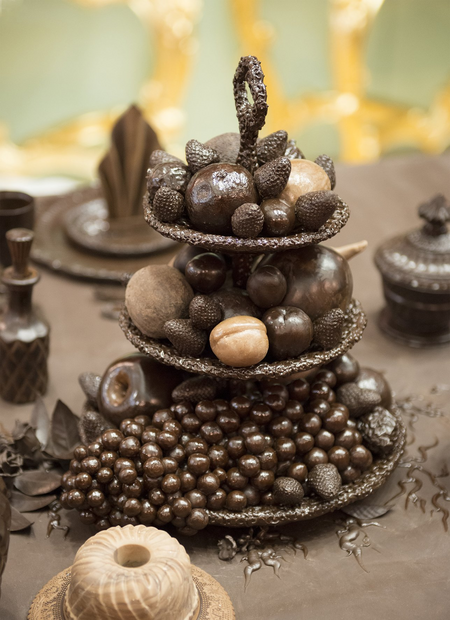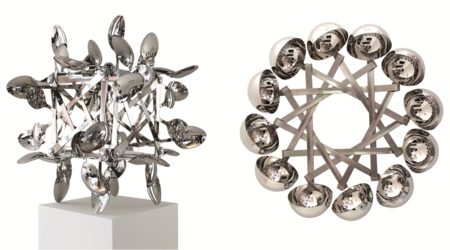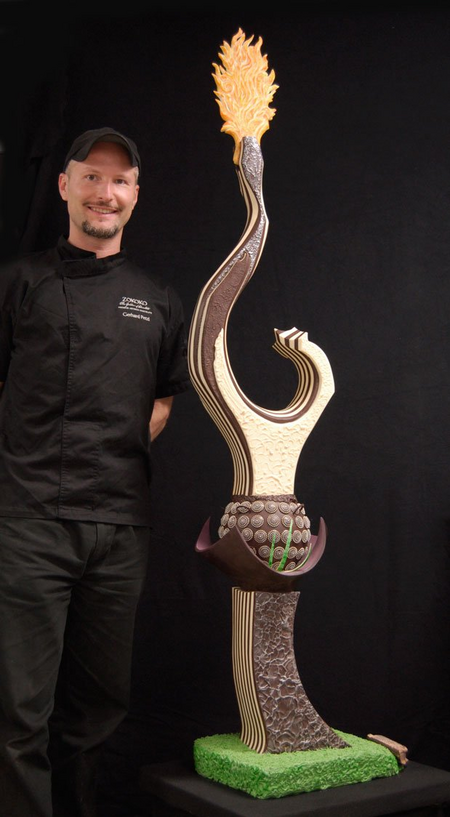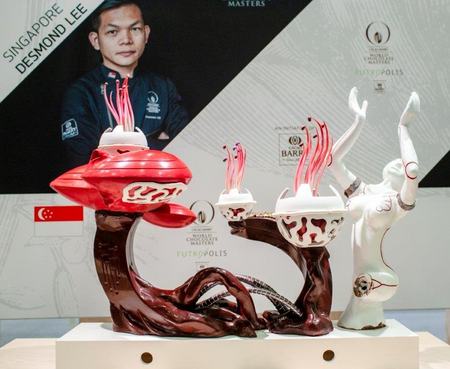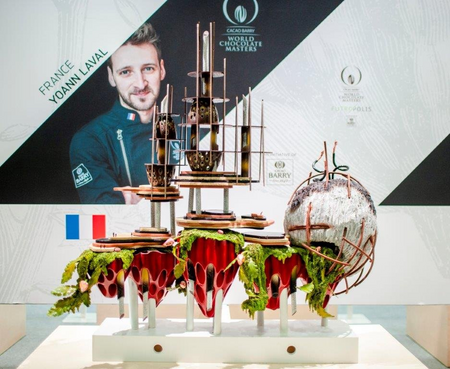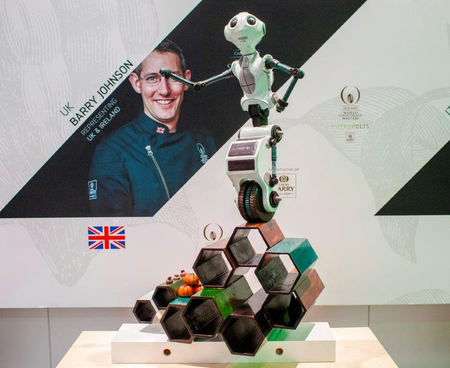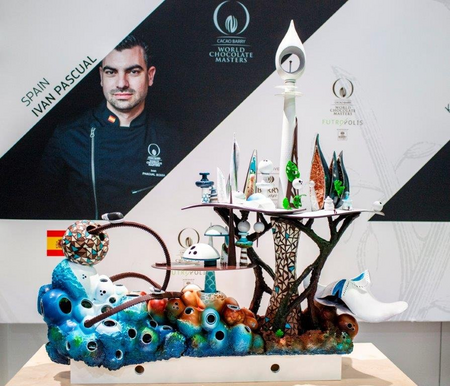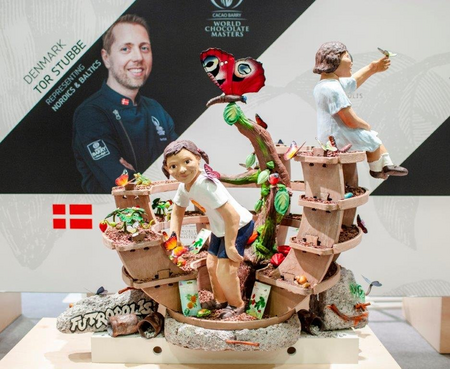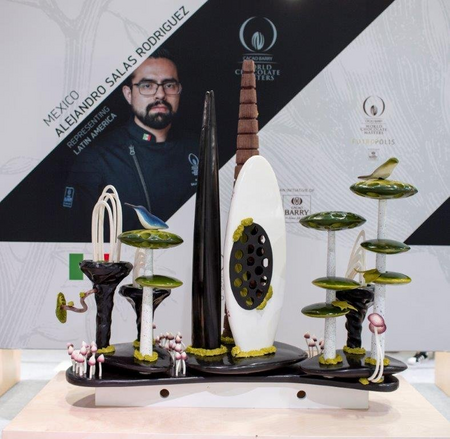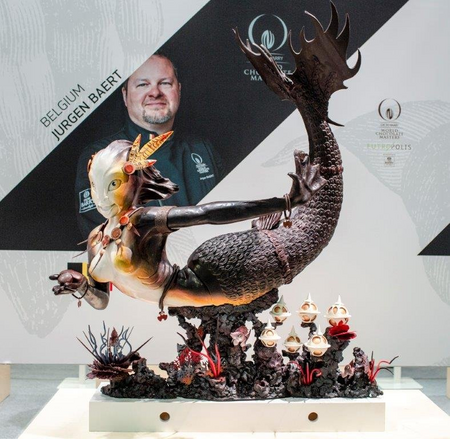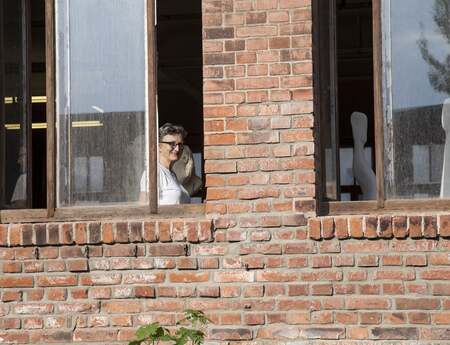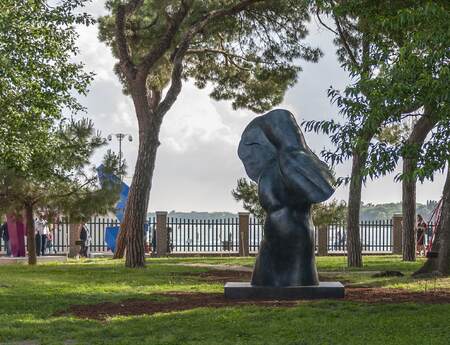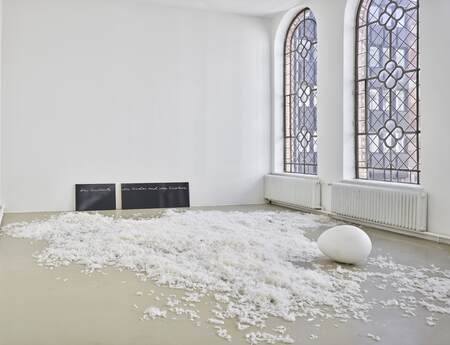Eat Art and Chocolate Art
Let's be honest, we actually celebrate some kind of chocolate day every day. Depending on your preferences, you can always find an occasion. Be it the Day of Mint Chocolate on 19 February, the Day of Chocolate Pudding on 26 June, World Chocolate Day on 7 July, or the International Chocolate Day on 13 September, to which we dedicate this text. On this occasion, our former intern Max Güntert has dealt with art related to food, especially chocolate.
The first cocoa beans are said to have arrived in Europe in 1550. Since then, their processing into chocolate and various chocolate products has been a constant success story. Countless flavours have been created, and above all, colour, shape and artistic design have become increasingly extravagant. After all, the eye eats before the mouth.
Even in Renaissance cook books, one can find references to the aesthetic modelling of dishes. At the so-called "Voidee"— the forerunner of today's dessert courses — at the banquets of European royal houses, marzipan, shortbread and meringue were used in particular because of their malleability. The "Voidee" offered the perfect stage for creative master bakers to experiment and to figuratively charge the food with more than just taste.
Whether it is the use of ingredients as aesthetic materials or the enhancement of normal food with inedible substances, since the 1960s, the boundary between upscale artwork and conventional meal has been broken and reinterpreted in many different ways. Daniel Spoerri's trick panels are regarded as the birth of "Eat Art", for which he fixed arbitrary remains of a meal to the tabletop using glue and preservatives to create a three-dimensional snapshot. In 1970 he opened the first exhibition space, the "Eat Art Galerie" in Düsseldorf, where all art objects were either edible themselves or had to deal with corresponding themes.
From 1961, the Swiss graphic artist Dieter Roth worked on another, no less exciting form of Eat Art in the broadest sense. For his - still controversial today - "literary sausages", the artist cut up book pages and filled them (mixed with spices and fat) into pig intestines. Among other things, Grass' "Tin Drum" and a complete edition of Hegel's works were made into sausages.
Far less controversial are the works of two sculpture network artists:
Heinz Bert Dreckmann has also devoted himself to the staging of ordinary things in an unusual context. He makes use of everyday objects such as locks, wooden clips, umbrellas, or plastic cans and puts them in connection with one another.

Heinz Bert Dreckmann, left: Vegetable Spoons screwed together ,2015, 54 x 54 x 54 cm;
right: 12 Ladles interwoven, 2017, Diameter 74 cm x 17 cm;
One could almost interpret his "Ladles, Screwed Together" as a reductive development of one of Spoerri's trick panels—the sculpture presents itself as a futuristically reflective table decoration, which, as an ensemble, appear to be a container.
On the topic of containers, bento boxes have been used to serve food in Japan in the form of since the 5th century. The term bento refers to the dishes themselves as well as for the special box in which several dishes are separated from each other by partitions. Nowadays, you can buy a box at a fast-food restaurant or follow one of the many DIY guides on the Internet, where you can discover particularly creative recipes. Because of the appealing design, bento is a popular trick used by Japanese mothers to encourage their children to eat the "unloved" vegetables.
Not only the beautiful design, but also the precise arrangement and correct exposure play a crucial role in the aesthetic experience of this Japanese meal. "Bento & Co" in Kyoto has adopted this aspect as its own and organizes an international contest every year in which a winner is selected from the photographic entries.
Clever marketers have long since recognised the obvious effect that well-presented food has on perceived quality. In recent years, a new creative professional field has emerged for this purpose: food styling. Food styling refers to the production and preparation of food before it is photographed for use in print media, package design and audio-visual media. This can be very time-consuming, and since the products typically do not look consistently fresh over a long period of time, dummies are commonly produced. This way, the appearance of a product can be precisely designed and fixed. In most cases, real food is used as the starting point, but very often the products are re-created from scratch. A wide variety of materials are used, ranging from paints, glycerine, wood and rubber to polystyrene and wax. The catering trade also uses food styling, mostly using chemical aids and processes. For example, in the development of molecular cuisine and in appropriately modified "molecular cocktails", the focus is on unusual flavours and textures.
Someone who, through his creative skills, masters both the conservation and tailor-made staging of his (non-)edible works of art and has already exhibited and participated in competitions all over the world is Sculpture Network member Gerhard Petzl. We talked to the artist to learn more about his exciting projects.
How did your special relationship with chocolate develop?
Since I worked as a pastry chef worldwide, I always needed showpieces for buffets and special orders for VIP guests. Since the feedback was always exceptionally good, I decided 10 years later to study Art & Design (Sculpture) to get a better understanding of materials, mould-making, and art history.
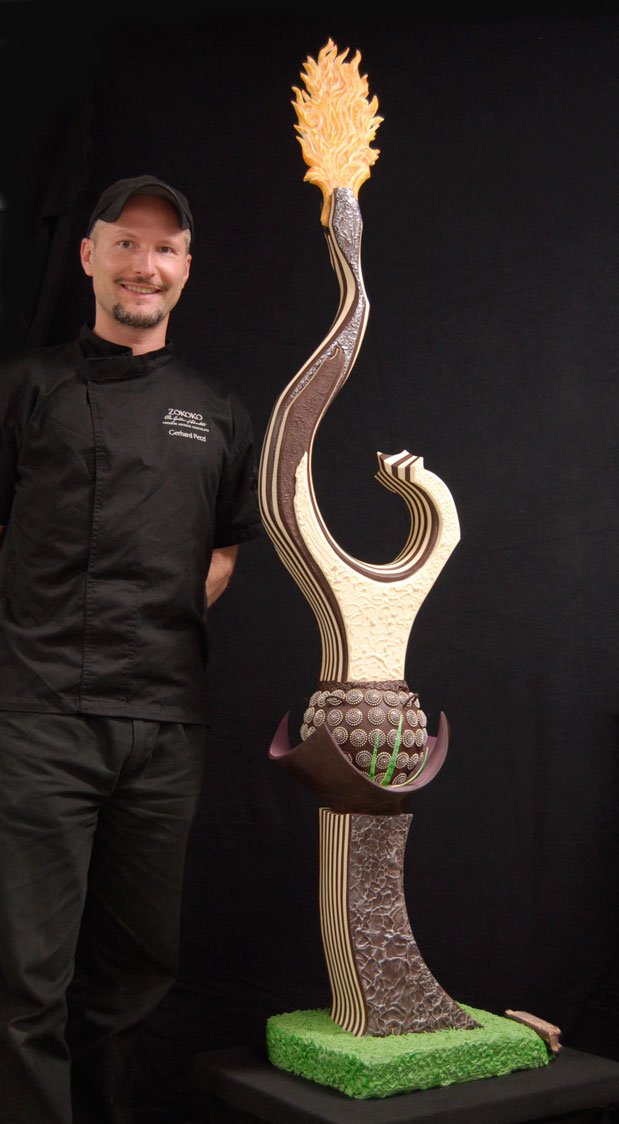
for the World Chololade Masters
Sydney 2012
You have exhibited your work all over the world and have also participated in the World Chocolate Masters in Australia. In your experience, what is the difference between the different "chocolate cultures/ arts" in the world?
This cannot be answered in a generalized way, because the World Chocolate Masters have a given theme and the Masters themselves (including me) are on a global professional journey, so it is very difficult to distinguish between cultures and artists. However, in the World Chocolate Masters, it is often noticeable that visual elements from the participants’ countries of origin are integrated. This means that there is almost an "opposite globalisation": a return to the local speciality—or it tips over to the other extreme and the showpiece elements become extra-terrestrial.
What was your most exciting project so far?
In my opinion, the most visually challenging project was the 5-meter-long baroque table I made for a gallery in the luxury shopping mall "Harbour City" in Hong Kong. 2,500 individual parts were assembled in 6 months of preparation time in Australia (where I lived at that time), with one week in Hong Kong to form a total work of art. There were three of us and each of us worked 120 hours that week. It required an unbelievable physical effort up to our psychological stress limits, but it definitely paid off. In the end, around 25,000 gallery visitors were able to enjoy this sweet feast visually and experience craftsmanship at the highest level. A piece of European tradition, an imperial baroque banquet table, fully set for 12 people, including cakes, bottles, candlesticks, plates, glasses and forks—all made of 100% chocolate.
...and your most curious incident on a project?
On this very project I had about 25 packed boxes in my house with all the chocolate pieces that had to be brought to Hong Kong by air express freight. Unfortunately, this year in Australia was the heat wave of the century, two air conditioners were running day and night and with an outside temperature of 40-45°C it was impossible to bring the parts safe and cooled to Sydney airport, because the temperature never dropped below 30°C even at night. After postponing the pick-up date twice, only a rainy day made the transport possible. Well, as a chocolate artist it would probably be better to live in arctic regions or in the far north.
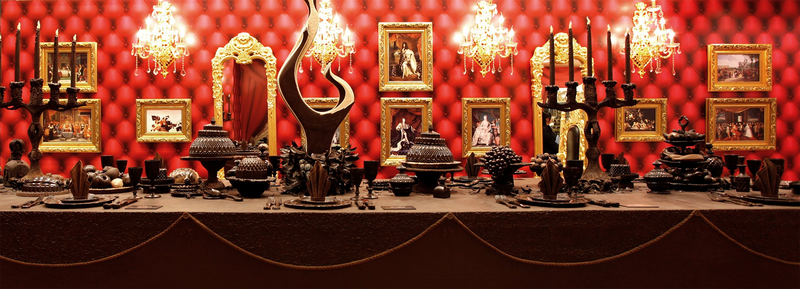
How do you resist the urge to eat your artwork?
If you have been working with chocolate on a professional basis almost daily for 25 years, then you also have a certain objectivity about the medium you work with. In other words: I like to eat high-quality dark chocolate in small quantities. But when I'm working on a sculpture, I'm so concentrated that the reference to food doesn't even occur to me and it would somehow feel wrong. Eating my own sculptures? It would be like eating myself, because the sculptures are a part of me.
What methods do you use for the conservation of your sculptures?
The finished sculptures are coated with marzipan varnish to keep them optically fit for 10 years (and more). An air-conditioned environment in the museums is standard anyway and even at normal room temperature (up to about 25°C) there are no problems and the sculptures remain durable.
Gerhard Petzl has recently published his third book "Wissenschaft trifft Schokoladenkunst". The artist was able to inspire renowned scientists, designers and doctors from all around the world, including Stanford University (USA), Canada, Switzerland, England, and Germany, to join this unique collaboration. The book is a sculptural voyage of discovery into various scientific fields such as chemistry, acoustics, geometry, biology and geology. Chocolate art and chocolate sculptures are juxtaposed with these areas. It is a trilogy mix of textbook, coffee-table book, and photo album, a bridge between food art and science, a source of inspiration to discover new things.
To find out more about Gerhard Petzls work vitit the Artists' Website
Author: Max Güntert
Max supported our team in May and June 2020 and expressed his passion for art and food in this article.
Title: Gerhard Petzl, Chocolate Fruit Stand
